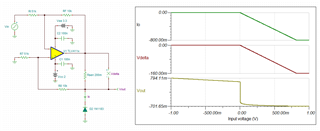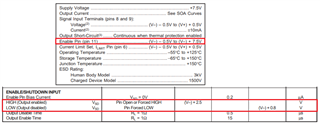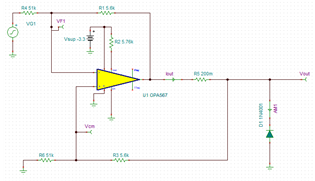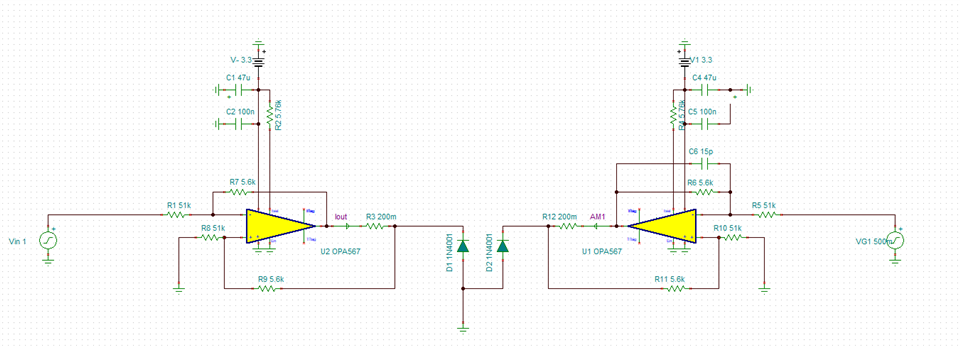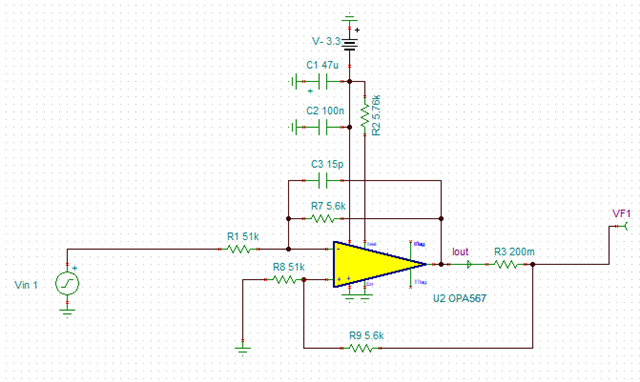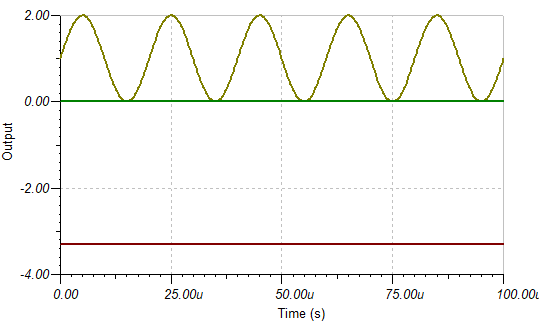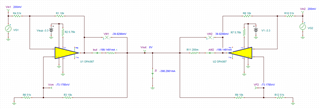Hello, ART
OPA567: Design review - Amplifiers forum - Amplifiers - TI E2E support forums
3. Output swing limit - the output swing limit is 0.2V for light load and good linear response, and 0.3V under heavy load. So, technically, you are close to this limit and/or violating this limit for low current levels. You can confirm if this is a problem or not. The diode voltage jumps up fairly rapidly when even low levels of currents are applied so as long as the diode drop is 0.3V or greater you should be ok.
=> So, technically, you are close to this limit and/or violating this limit for low current levels.
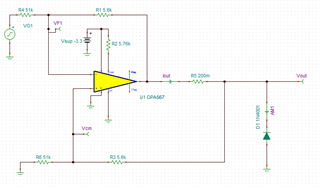
Q1. How can the issues related to the low current level be addressed in the above circuit?
Would using dual power supplies (+3.3V/-3.3V) resolve operational issues at low current levels?
When using an input voltage around 0~0.2V, a pulse similar to the one shown in the diagram occurs at the Vcm of OPA567.
This pulse continues to increase, causing the OPA567 to malfunction.
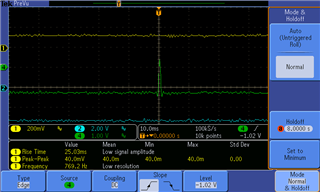
Q2. Is there an alternative circuit configuration to use the Laser Diode type shown below, aside from the one depicted above?
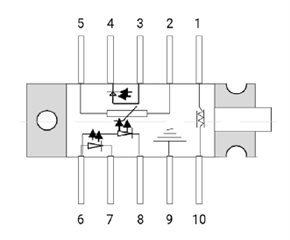
Thank you.




